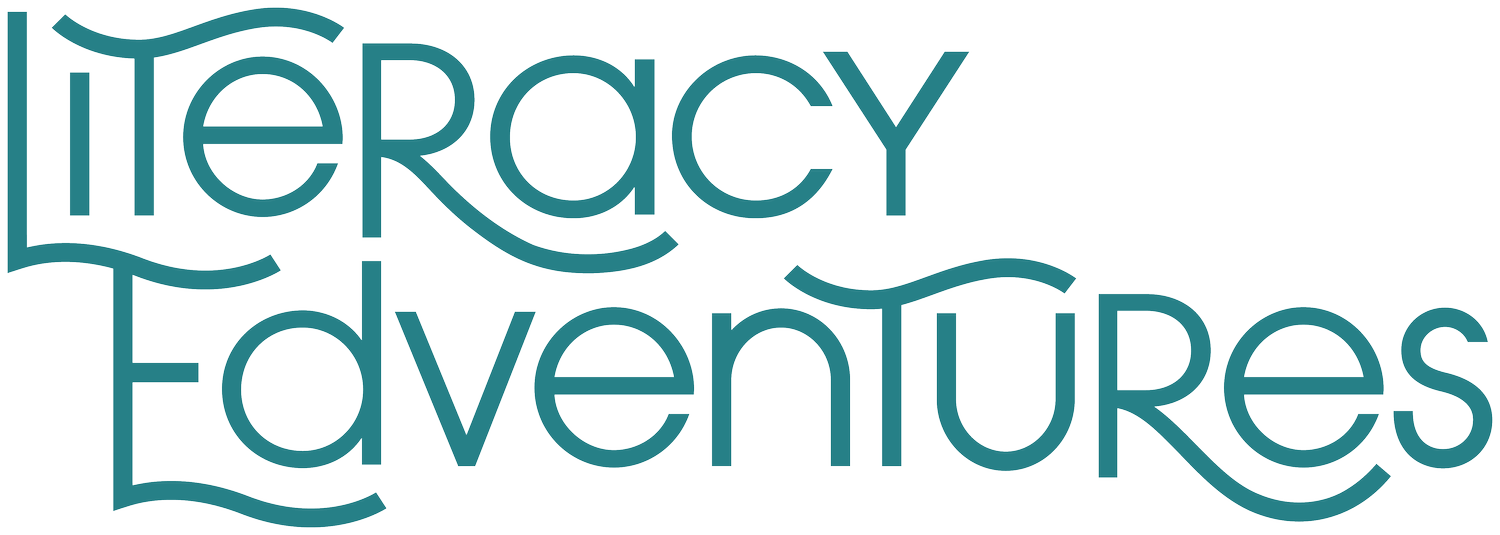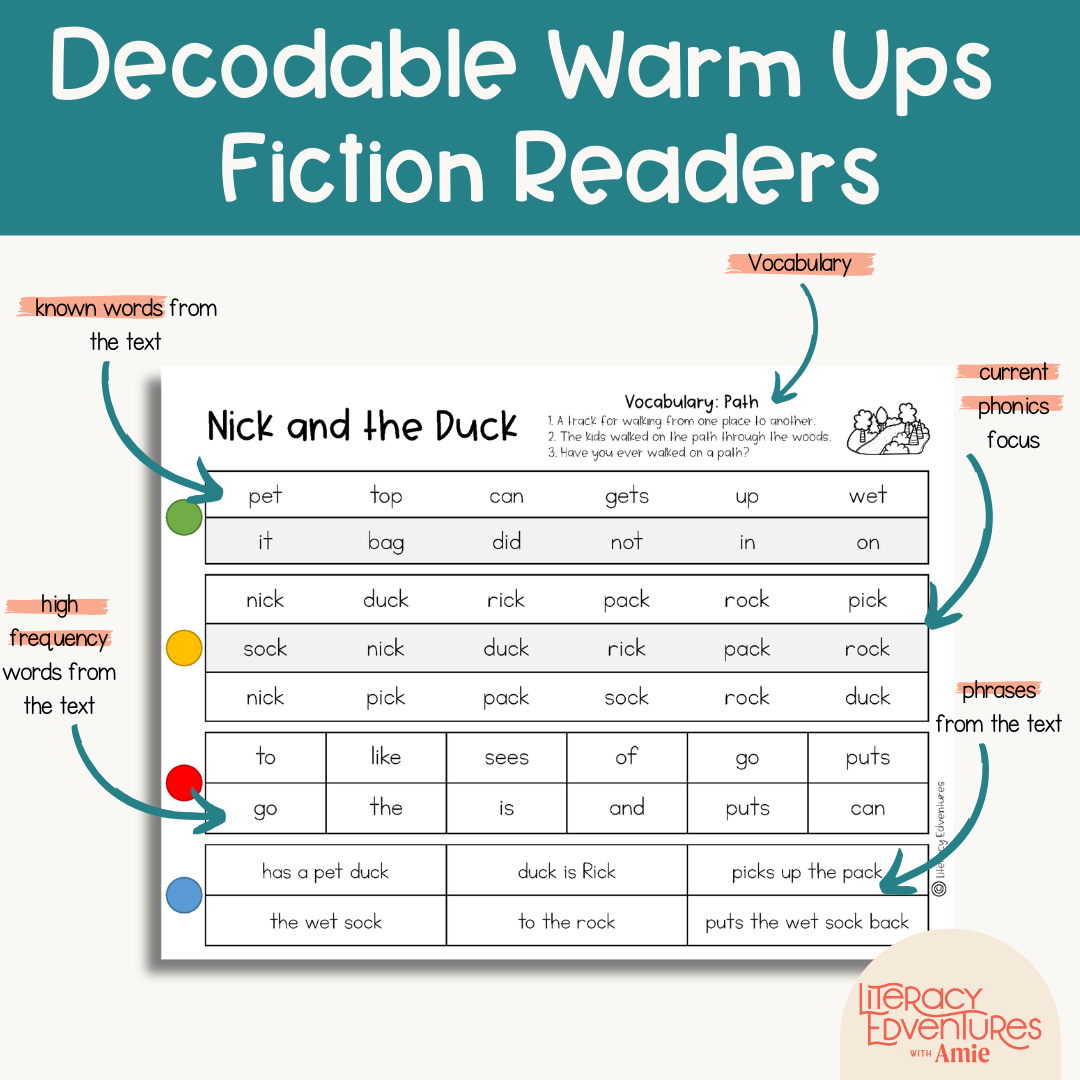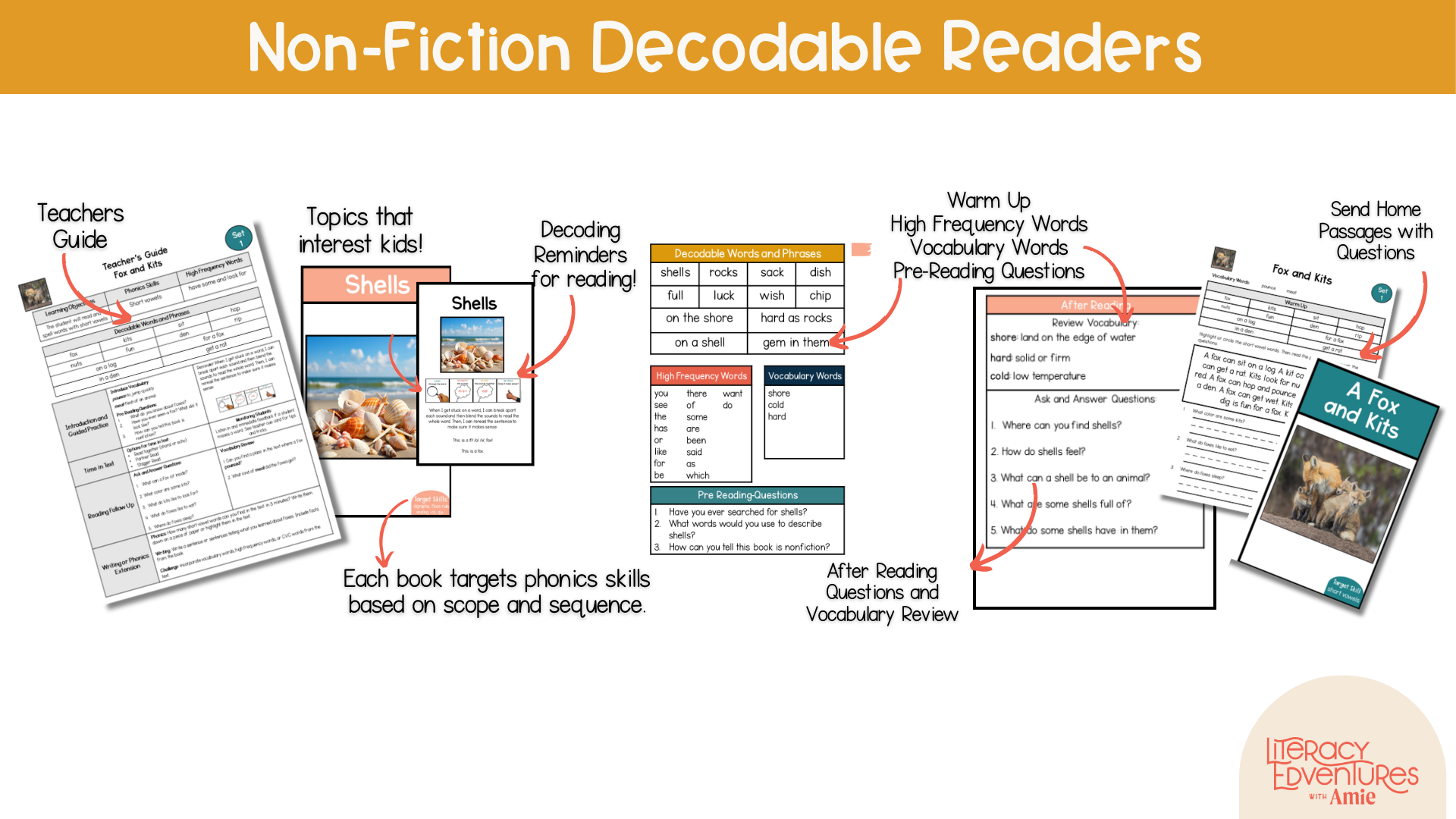Using Decodable Books Effectively
The Power of Decodable Books for Early Readers
Even though I’m now a literacy coach, I once found myself relying heavily on leveled readers in my first-grade classroom. When my students encountered an unknown word, I’d often suggest they guess by looking at the picture or even skipping the word. What I didn’t realize at the time was that I was teaching my students to be great guessers—not great readers.
As we always say here at Literacy Edventures: when you know better, you do better!
I had a hunch this wasn’t the best approach, but I didn’t know what else to do. That’s when decodable books entered my life and transformed the way I taught reading. Today, I’m excited to dive into what decodable books are, who needs them, and how you can use them effectively in the classroom to build confident, successful readers.
What Are Decodable Books?
Decodable books are carefully designed to align with specific phonics skills that have been explicitly taught through a structured literacy program. These books grow with students as their phonics knowledge deepens, providing a critical bridge to independent reading.
Characteristics of Decodable Books:
Phonics Alignment: Decodable texts are crafted around specific phonics patterns. For instance, if students are learning short vowel sounds, the text will predominantly feature words with those sounds.
Controlled Vocabulary: Decodable books limit the vocabulary to words that students can decode based on their current phonics knowledge. This makes the text manageable and builds confidence.
Sequential Progression: These books follow a systematic sequence, gradually introducing new phonics patterns while reinforcing previously taught ones.
Decoding Practice: Decodable texts provide opportunities for students to apply decoding skills in context, reinforcing their ability to read words accurately.
Phonemic Awareness Support: By focusing on the relationship between sounds and letters, these texts strengthen students’ phonemic awareness.
Decodable books act as stepping stones, helping students cross the river from early phonics instruction to fluent, confident reading. I like to tell my students that decodable books are their "reading sidekicks." While they’re essential at this stage, the goal is to eventually transition students to authentic texts.
Who Needs Decodable Books?
Decodable books are perfect for early readers who have received explicit phonics instruction and practiced decoding skills. These books are particularly beneficial for:
Beginning Readers: Students just starting their literacy journey.
Struggling Readers: Students who need extra support mastering phonics.
Dyslexic Learners: Students who benefit from a structured, phonics-based approach.
It’s essential to align decodable books with the phonics skills you’ve taught or are currently teaching. For example, if you’ve recently introduced consonant blends, the decodable text should feature words containing these blends.
What are some routines for using decodable books?
Incorporating decodable books into your classroom doesn’t have to be complicated. Here’s a simple routine to get started:
1. The Warm-Up:
Before reading, prepare students with a quick warm-up.
Practice phoneme-grapheme correspondence.
Review high-frequency words.
Introduce any new vocabulary found in the book.
My own fiction passages and nonfiction decodable series include these warm-up components to save you time!
2. Time in Text:
During reading, focus on fluency and accuracy by having students read the decodable book multiple times.
First Read: Use choral or echo reading to build familiarity. Provide feedback as you go.
Second Read: Have students whisper-read independently while you listen in and offer individual feedback. If a student struggles with a word, guide them back to it and encourage a reread of the full sentence.
3. Follow-Up:
After reading, engage students in comprehension activities.
Ask questions about the text to reinforce understanding.
Remember, this shouldn’t replace daily read-alouds, which are crucial for building language comprehension.
Why Are Decodable Books Important for Early Readers?
Research, including insights from the Science of Reading, tells us that strong readers must be able to both decode and comprehend. Decodable books are a temporary but vital part of this journey, helping students build the foundational skills they need to tackle authentic texts confidently.
Benefits of Decodable Books:
Provide systematic, scaffolded practice for decoding.
Build reading fluency through repetition and reinforcement.
Boost confidence as students experience success with texts they can read independently.
Example of Using Decodable Books in Action
Recently, I worked with a group of first-grade students who were learning short vowel sounds. We used a decodable book featuring short-a words like “cat,” “bag,” and “sat.” After a warm-up where we practiced segmenting and blending these words, we read the text together using echo reading.
During their second read, I listened closely as students whisper-read, offering feedback on tricky words. Finally, we discussed the story’s events, pulling in comprehension to round out the lesson.
This simple routine gave my students confidence and allowed them to apply their phonics skills in a meaningful way.
Keep in Mind
Decodable books are temporary, but their impact is lasting. By embracing decodable books for early readers, you’re equipping your students with the tools they need to succeed in their reading journey.
When we combine explicit phonics instruction with the strategic use of decodable texts, we’re building a foundation that sets students up for literacy success for years to come.
Embrace the power of decodable books. They might just become your favorite "sidekick" in teaching early readers!





